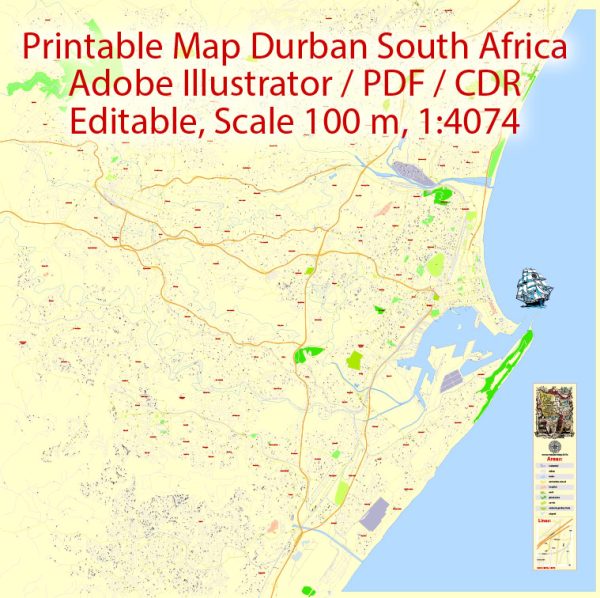Durban, located on the east coast of South Africa in the KwaZulu-Natal province, has a rich history of urban development that reflects the complex social, economic, and political dynamics of the region. The city has evolved from its humble beginnings to become a major economic and cultural hub in South Africa.
- Early History:
- The area that is now Durban was originally inhabited by the indigenous Zulu people. The first European settlers, mainly British colonists, arrived in the early 19th century.
- In 1824, a trading post was established by British Lieutenant F.G. Farewell, marking the beginning of European influence in the region.
- Port Development:
- Durban’s growth was significantly influenced by its status as a major port. The natural harbor made it a strategic location for trade and commerce.
- The arrival of Indian laborers in the late 19th century, brought in to work on sugarcane plantations, further shaped the cultural and demographic landscape of the city.
- Apartheid Era:
- During the apartheid era (1948-1994), Durban, like the rest of South Africa, experienced segregation and discrimination. The Group Areas Act led to the forced removals of non-white populations to specific areas, resulting in the creation of racially segregated neighborhoods.
- Despite the oppressive policies, the city continued to grow economically, with its port playing a crucial role in the country’s trade.
- Post-Apartheid Transformation:
- With the end of apartheid in 1994, South Africa underwent a period of significant political and social change. Durban, too, began to transform, with a focus on dismantling segregation and promoting inclusivity.
- Urban renewal projects aimed at improving infrastructure and public spaces were initiated. The Moses Mabhida Stadium, built for the 2010 FIFA World Cup, is a notable example of this revitalization effort.
- Economic Hub:
- Durban has become a key economic center, particularly in industries such as shipping, manufacturing, and tourism. The city’s strategic location and well-developed infrastructure contribute to its economic significance.
- Cultural Diversity:
- Durban’s population is characterized by a rich mix of cultures and ethnicities, including Zulu, Indian, and European influences. This diversity is evident in the city’s architecture, cuisine, and cultural events.
- Challenges and Opportunities:
- Like many urban centers, Durban faces challenges such as poverty, inequality, and inadequate infrastructure in certain areas. Efforts to address these issues continue alongside ongoing urban development projects.
- Tourism:
- Durban has become a popular tourist destination, known for its beaches, cultural festivals, and historical sites. Tourism plays a crucial role in the city’s economy.
In summary, Durban’s history of urban development reflects the broader narrative of South Africa, marked by colonialism, apartheid, and subsequent efforts to build an inclusive and thriving city. The ongoing development projects and cultural richness contribute to Durban’s status as a dynamic and significant urban center in South Africa.


 Author: Kirill Shrayber, Ph.D.
Author: Kirill Shrayber, Ph.D.